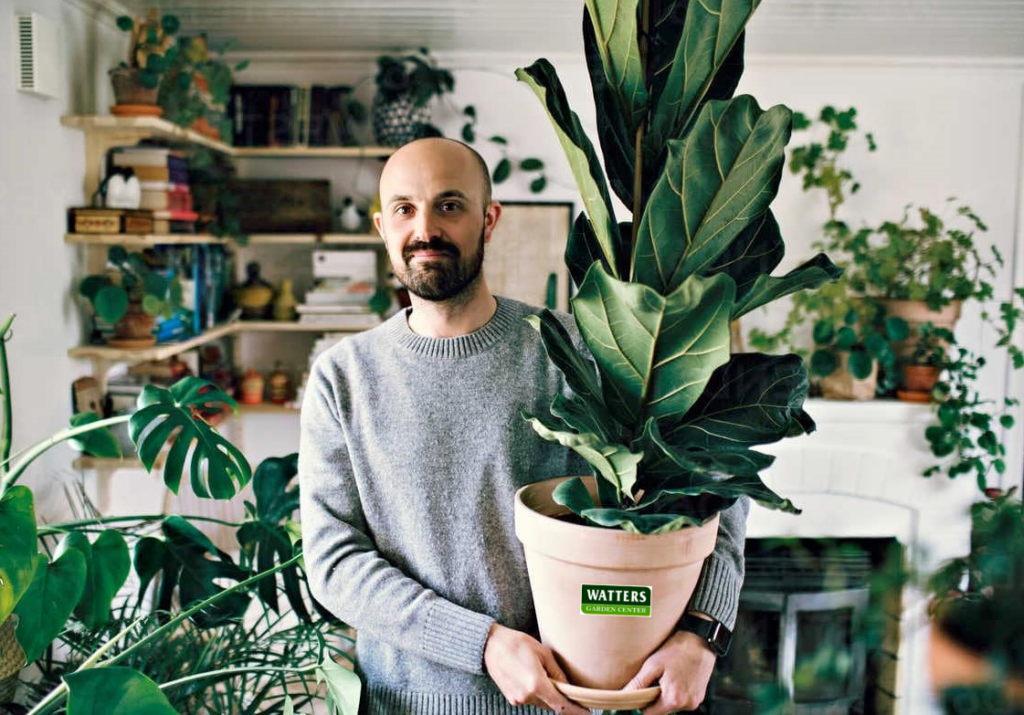by Ken Lain, the mountain gardener
- How do I keep my indoor plants humid?
- How to naturally humidify my plants.
- What is the healthiest indoor humidity?
- Best temperature and humidity for plants.
- How to increase humidity for plants without a humidifier.

Houseplants thrive with 50% humidity, yet most winter homes barely register moisture in the winter air. The most popular houseplants at Watters Garden Center are native to the tropics or subtropical regions. They flourish in the loamy, humid underbrush of a more immense forest. These plants are poorly acclimated to growing in our typical home. Many of the aroids and most popular orchids fall into this category. Even English ivy is meant to grow in humid and moist forests.
The Percentage Disconnect
For these plants, a humidity of even 50 percent isn’t enough. Some prefer humidity that reaches the 80% range. By contrast, many homes are virtually bone dry, primarily through winter months as heat pumps kick in and blow hot, dry air throughout. In these homes, a humidity of 20% percent is standard.
How to Increase Humidity
Look for signs of humidity stress, such as brown leaf tips or brown leaf margins.
#1 Group your plants. Plants release moisture through their leaves in a process called transpiration. By grouping plants together, you create an artificial microclimate benefiting all the plants. It’s also a good idea to keep plants with similar humidity requirements near each other. When Aroids are your passion, group them together in one place where their more rapid transpiration rates create higher ambient humidity in the growing area.
#2 Place plants in trays with pebbles. This is a popular way to raise humidity immediately around each plant. Use clean trays, put 1″ inch of gravel in each tray, and then set the pots on the pebbles. Fill the tray with water halfway up the stones. Every time you flush your plants, make sure to empty and rinse the tray. This will ensure your tray doesn’t become a breeding ground for insects and reduce the concentration of fertilizer salts accumulated in the tray.
#3 Misting plants. This is another popular method to increase humidity. Keep a misting bottle filled with clean water and spray your plants every so often. Misting is especially helpful at the beginning of the winter season when the humidity drops rapidly with the temperature. Avoid misting plants with hairy or velvety leaves, such as African violets. Misting these plants encourages diseases.
#4 Use a humidifier. Humidifiers raise the humidity in the whole house. Plants love humidifiers as much as you do.
#5 Terrariums. If you’re growing unsatisfied plants, try switching to terrariums. A terrarium is an enclosed environment with soil and a few small plants. The system is sealed, so the plants exhale moisture through transpiration, only to have the water gather on the terrarium walls and fall back into the soil. Terrariums are perfect for smaller plants that require higher humidity and temperatures.
Until next week, I’ll be helping local gardeners grow healthier plants here at Watters Garden Center.
Ken Lain can be found throughout the week at Watters Garden Center, 1815 W. Iron Springs Rd in Prescott, or contacted through his website at WattersGardenCenter.com or Top10Houseplants.com.

